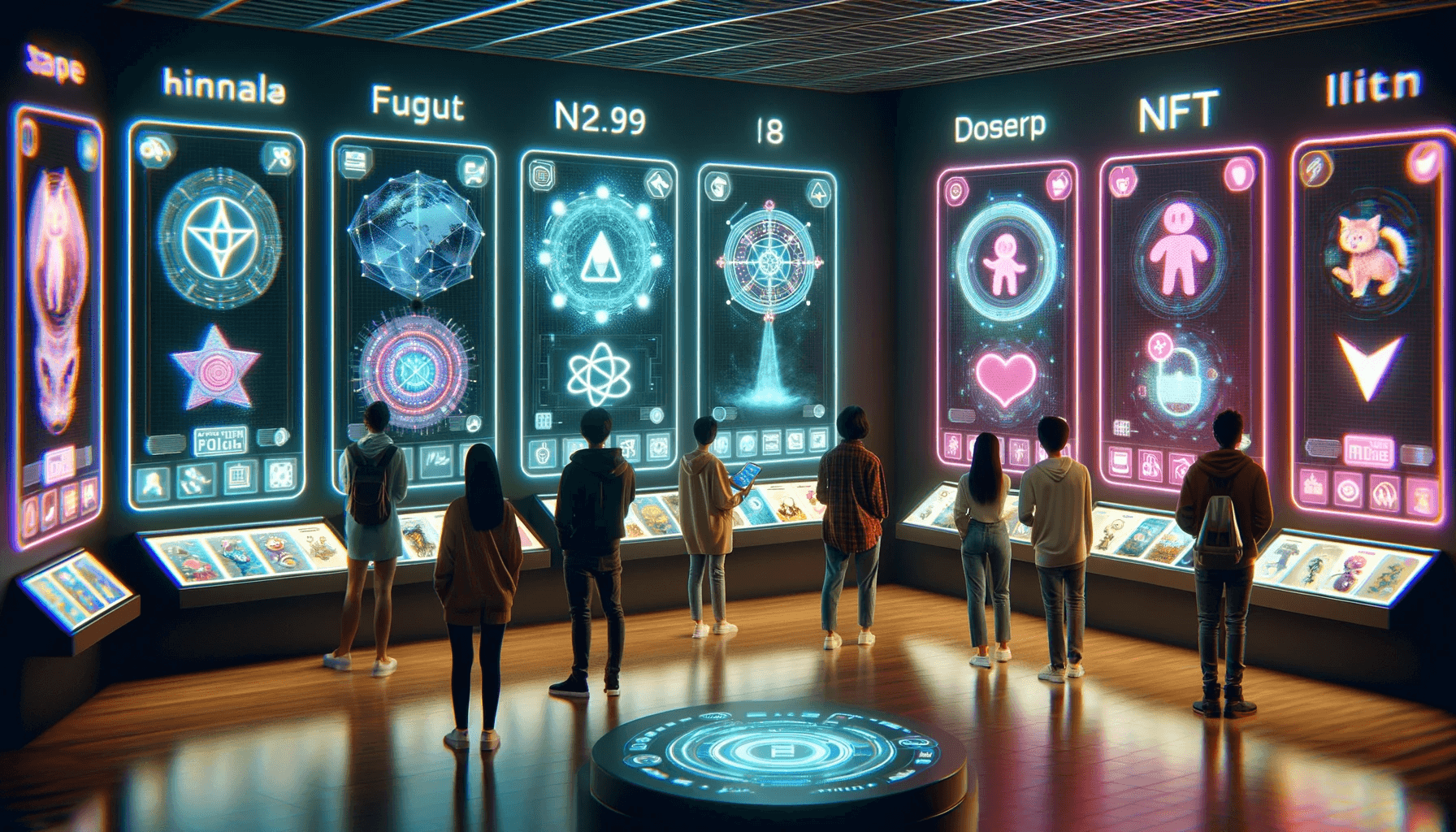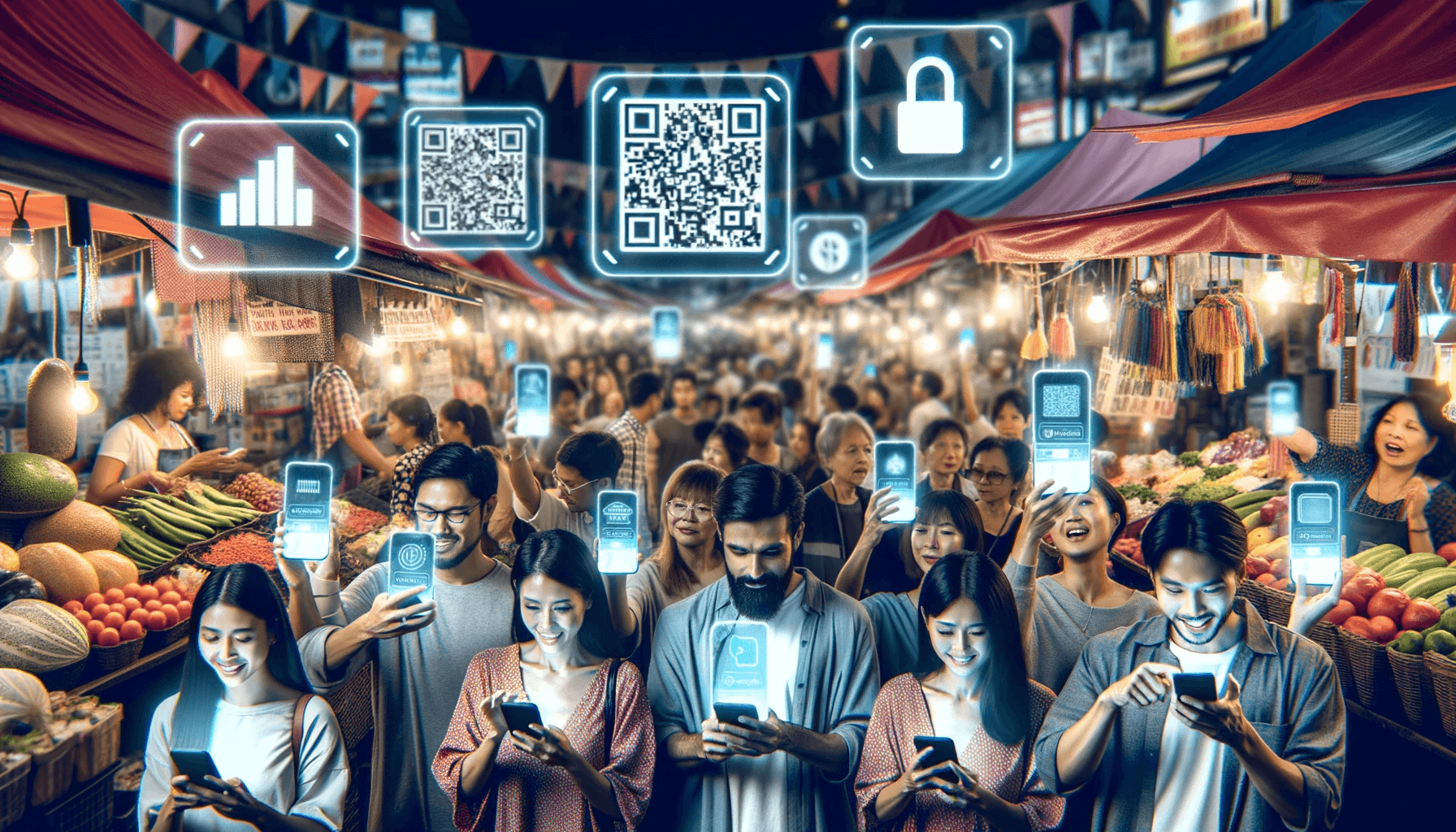(p)Digital collectibles and NFTs (Non-Fungible Tokens) have revolutionized the world of art and collectibles by leveraging blockchain technology. This article will delve into the fascinating realm of digital collectibles and NFT apps, exploring their definitions, types, and the popular platforms that have emerged in this space. we will examine the benefits and potential risks associated with digital collectibles and NFTs. Finally, we will venture into the future of this rapidly evolving landscape to understand the potential impact and possibilities that lie ahead. As we embark on this journey, we will uncover the allure and intricacies of digital collectibles and NFTs, and the role they play in reshaping the way we perceive and own unique digital assets.(/p)
(p)Let’s dive in!(/p)
Key takeaways:
- Digital collectibles are unique assets that exist in digital form and can be bought, sold, and owned using blockchain technology, providing increased verifiability and scarcity.
- NFTs, or non-fungible tokens, are a type of digital collectible that represent ownership or proof of authenticity for a specific digital item, such as artwork, music, or virtual real estate.
- There are various NFT apps and platforms that enable users to create, buy, sell, and trade digital collectibles, including NFT marketplaces, NFT art platforms, and NFT gaming platforms.
What are Digital Collectibles?
Digital collectibles have taken the world by storm, igniting a frenzy of excitement and curiosity. Wondering what exactly they are? Let’s dive right in! We’ll start by shedding light on the concept of digital collectibles, unraveling their essence and exploring their unique characteristics. Not stopping there, we’ll also delve into the various types of digital collectibles that captivate collectors and enthusiasts alike. Get ready to embark on a thrilling journey into the world of digital collectibles, where creativity and innovation collide!
Defining Digital Collectibles
A clear understanding of what digital collectibles are is crucial. These unique digital assets can be owned, bought, and sold, just like traditional collectibles. They are often linked to non-fungible tokens (NFTs), which serve as proof of ownership and authenticity. Digital collectibles encompass various forms, including artwork, trading cards, and virtual real estate. What sets them apart is that they are digital representations of physical or virtual objects. Due to their limited quantities, digital collectibles become scarce and hence gain value. The ownership of these collectibles is securely stored on a blockchain, providing transparency and immutability. As the demand for digital collectibles and NFTs continues to rise, differentiating them from traditional collectibles becomes increasingly important for everyone involved.
Types of Digital Collectibles
Digital collectibles come in various forms and categories, catering to different interests and preferences. Here is a table showcasing the Types of Digital Collectibles available today:
| Type of Digital Collectible | Description |
|---|---|
| CryptoArt | Digital artwork created using blockchain technology, often sold as non-fungible tokens (NFTs). Examples include digital paintings, illustrations, and animations. |
| Virtual Real Estate | Virtual properties or land within online worlds or metaverses, where users can own, trade, and develop virtual buildings or spaces. |
| Virtual Fashion | Digital clothing, accessories, and avatar customization options for virtual platforms and games. Users can dress up their avatars or sell virtual fashion items. |
| Sports Collectibles | Digital trading cards or memorabilia featuring athletes, teams, or moments. These collectibles often come with limited editions or unique stats, enhancing their value. |
| Digital Music | Exclusive songs, albums, or concert recordings sold as NFTs. Artists can offer special editions or access to virtual concerts and VIP experiences. |
| Collectible Games | Digital items or characters within blockchain-based games, where users can battle, trade, or breed unique creatures or assets. Examples include CryptoKitties and Axie Infinity. |
These are just a few examples of the diverse range of digital collectibles available today. Each type offers unique experiences and opportunities for collectors and enthusiasts to engage with digital assets.
What are NFTs?
NFTs, short for non-fungible tokens, are digital assets that are unique in nature and can be bought, sold, and owned on the blockchain. Unlike cryptocurrencies like Bitcoin or Ethereum, which can be exchanged for one another, NFTs are one-of-a-kind and cannot be duplicated or replicated. These tokens can represent various types of digital media, including artwork, music, videos, and even virtual real estate. In recent times, NFTs have gained significant popularity in the art world as they provide a direct channel for artists to sell their creations to collectors, eliminating the need for intermediaries. For those interested in acquiring NFTs, it is crucial to conduct meticulous research on the artist or creator to ensure both its authenticity and value.
Understanding NFTs
NFTs, or Non-Fungible Tokens, have gained significant popularity in the digital world. They are unique digital assets that can represent ownership of a variety of items like art, music, videos, and more. Understanding NFTs requires grasping their key characteristics and workings. NFTs are based on blockchain technology, which ensures their authenticity and uniqueness. They are bought, sold, and traded on NFT marketplaces like OpenSea and Rarible. It’s essential to weigh the risks and challenges associated with NFTs, such as their environmental impact and potential for scams. As the digital collectibles and NFT space evolves, it offers exciting possibilities for creators, collectors, and investors alike. Stay informed and explore this fascinating world cautiously.
How Do NFTs Work?
NFTs, or non-fungible tokens, work by utilizing blockchain technology to create unique digital assets. Each NFT is assigned a unique identifier that distinguishes it from other tokens, making it indivisible and irreplaceable. So, how do NFTs work? Well, this technology ensures that NFTs cannot be replicated or counterfeited, providing authenticity and provenance to digital collectibles such as artwork, music, videos, or virtual real estate. NFTs are bought, sold, and traded on various online platforms, with transactions recorded on the blockchain. The ownership and transaction history of NFTs can be easily verified, making them ideal for digital artists, collectors, and investors.
Popular NFT Apps and Platforms
Get ready to explore the exciting world of digital collectibles and NFTs with a deep dive into popular NFT apps and platforms. We’ll uncover the diverse landscape of NFT marketplaces, where unique digital assets are traded and valued. Then, we’ll check out the vibrant NFT art platforms that showcase stunning digital artwork, allowing artists to reach a global audience like never before. And finally, we’ll venture into the realm of NFT gaming platforms, where virtual worlds and in-game items are revolutionizing the gaming experience. Get ready to discover the hottest hubs for NFT enthusiasts and creators alike!
NFT Marketplaces
NFT Marketplaces serve as platforms where individuals can engage in the buying, selling, and trading of non-fungible tokens. These NFT marketplaces provide a central space for creators and collectors to connect and transact. Here are some popular NFT marketplaces:
- OpenSea: One of the largest NFT marketplaces, offering a wide range of digital collectibles from art to virtual real estate.
- Rarible: Allows users to create and sell their own NFTs, fostering a decentralized and community-driven NFT marketplace.
- Nifty Gateway: Known for its collaborations with well-known artists, offering exclusive drops and limited edition NFTs.
- SuperRare: Focuses on curated digital artworks, providing a platform for artists to showcase and sell their unique creations within the NFT marketplace.
- Foundation: A highly selective NFT marketplace for creators, showcasing art, design, and other digital collectibles.
These NFT marketplaces provide opportunities for artists, collectors, and enthusiasts to participate in the rapidly evolving ecosystem of digital collectibles.
NFT Art Platforms
NFT Art Platforms have emerged as popular spaces for artists and collectors to showcase and trade digital artwork. These NFT Art Platforms offer a unique opportunity to experience and own digital art in a whole new way. Here are some notable
| SuperRare: | Focused on showcasing rare and unique digital artworks. |
| Foundation: | Known for its curated selection of high-quality digital art. |
| Nifty Gateway: | Features limited-edition releases from well-known artists. |
| Rarible: | Allows artists to create, sell, and trade their own digital art. |
As the NFT Art Platforms continue to evolve, new platforms are constantly emerging, providing artists and collectors with even more options to explore and engage with this exciting digital art movement. So, if you’re interested in diving into the world of NFT Art, these Platforms are a great place to start.
NFT Gaming Platforms
NFT gaming platforms have gained immense popularity in the digital collectibles market. These platforms offer a wide range of unique gaming experiences and provide users with opportunities to acquire rare and valuable in-game assets. When exploring NFT gaming platforms, it is essential to consider the following key aspects:
- Game Selection: Look for NFT gaming platforms that offer a diverse selection of games, catering to various genres and play styles.
- In-Game Assets: Consider the platform’s variety and rarity of NFTs available for purchase, sale, and trade.
- Economic System: Evaluate the platform’s economic system, including marketplace functionality and the ability to earn and monetize in-game assets.
- Community and Social Features: Seek NFT gaming platforms that foster an active and engaged community with features like chat, forums, and social integration.
- User Experience: Take into account the platform’s user interface, ease of use, and overall gameplay experience.
By considering these factors, you can discover NFT gaming platforms that align with your gaming preferences and provide exciting opportunities in the world of digital collectibles.
Benefits and Risks of Digital Collectibles and NFTs
Step into the marvelous realm of digital collectibles and NFTs, where a treasure trove of benefits and risks awaits. Discover the incredible advantages that come with embracing digital collectibles and NFTs, exploring how they can revolutionize ownership and creativity. Get ready to also explore the potential pitfalls and challenges that accompany this thrilling digital landscape. Hold tight as we navigate through the captivating realms of the benefits and risks of digital collectibles and NFTs, revealing the potential rewards and cautionary tales that lie beneath the surface.
Benefits of Digital Collectibles and NFTs
- Ownership and Authenticity: NFTs offer a unique digital signature, ensuring the authenticity and ownership of the collectible.
- Global Accessibility: Digital collectibles and NFTs provide access and trading opportunities to anyone with an internet connection, eliminating barriers of location and time.
- Creator Control: Creators can earn royalties on secondary sales of their digital collectibles, ensuring ongoing revenue streams.
- Creative Opportunities: NFTs enable innovative ways to express creativity, including digital art, music, and virtual real estate.
- Exclusivity and Rarity: NFTs allow the creation of limited edition digital collectibles, increasing their value and desirability.
- Community Engagement: Collectors can join vibrant online communities centered around digital collectibles, fostering connections and collaboration.
Fact: The highest-selling NFT artwork to date is “Everydays: The First 5000 Days” by artist Beeple, which sold for a staggering $69.3 million.
Risks and Challenges of Digital Collectibles and NFTs
Investing in digital collectibles and NFTs comes with its fair share of risks and challenges. Here are some key considerations to keep in mind regarding the risks and challenges of digital collectibles and NFTs:
| Market Volatility: | The value of digital collectibles and NFTs can be highly volatile, with prices fluctuating dramatically based on trends and market demand. |
|---|---|
| Lack of Regulation: | The current lack of regulatory oversight in the digital collectibles and NFT space creates uncertainty and exposes investors to potential scams and fraudulent activities. |
| Environmental Concerns: | The energy consumption associated with blockchain technology, on which many NFTs are based, has raised concerns about its environmental impact. |
| Ownership and Authenticity: | With the ease of creating and selling digital assets, verifying ownership and authenticity can be challenging, leading to disputes and legal complications. |
It’s crucial to conduct thorough research and due diligence before entering the world of digital collectibles and NFTs, understanding the potential risks involved.
Exploring the Future of Digital Collectibles and NFTs
Exploring the Future of Digital Collectibles and NFTs reveals a multitude of exciting possibilities for creators, collectors, and investors alike. As blockchain technology continues to evolve, digital collectibles are steadily becoming more interactive, incorporating features like augmented reality and virtual reality to enhance the user experience. In particular, NFTs provide a unique opportunity for individuals to authenticate and assert ownership over their digital assets, effectively revolutionizing various industries such as art, gaming, and sports memorabilia. As we look ahead, it is only natural to anticipate digital collectibles becoming even more integrated into our daily lives, effectively blurring the boundary between physical and digital possessions. Hence, I urge you to embrace this new frontier and embark on your digital collection today!
Frequently Asked Questions
What are NFTs and how do they relate to digital collectibles?
NFTs, or non-fungible tokens, are unique digital assets stored on a blockchain. They represent real-world physical items like artwork, music albums, sports cards, and memes. NFTs have gained popularity in the digital collectibles space, allowing people to buy, sell, and trade unique digital items using cryptocurrency.
How do NFTs differ from cryptocurrencies like Bitcoin and Ether?
While NFTs exist on a blockchain like cryptocurrencies, they are non-fungible, meaning they can’t be subdivided and each one is unique. On the other hand, cryptocurrencies are fungible, as each unit is interchangeable with another. NFTs also have distinct identity codes, making it difficult to create fake ones.
What are the properties of NFTs?
NFTs have several properties that set them apart. They include decentralization, verifiable scarcity, verifiable history, and true ownership. NFT transactions are enforced by smart contracts, and the number of NFTs in a collection can be publicly verified. The history of NFT transactions is recorded on the blockchain, allowing for authentication of previous owners.
How can NFTs be managed and stored securely?
To manage NFTs, a secure wallet like the Trust Wallet is needed. The Trust Wallet dApp Browser provides access to top NFT marketplaces for buying, selling, and adding to personal collections. NFTs are exclusively controlled and owned by the individual who possesses the private keys to their wallet, ensuring their security.
What are some examples of notable NFT sales and achievements?
Notable NFT sales include a viral meme sold for a high value, a digital painting of a rock sold for a significant amount, a cartridge of Super Mario 64 sold for a large sum, and even Twitter CEO Jack Dorsey’s first tweet sold as an NFT for a considerable price. Additionally, artists like Beeple have achieved significant monetization opportunities through NFTs.
How are NFTs impacting the gaming industry?
NFTs have gained popularity in the gaming industry by offering new ways for game developers to design games and for players to own, enhance, and trade in-game virtual assets. NFT-based games like Alien Worlds and Splinterlands allow players to trade unique and rare in-game items as NFTs, providing them with increased control over their virtual possessions.






